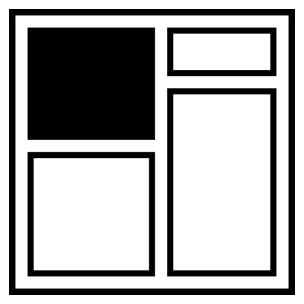Creating My First Chrome Extension
Writing a Chrome Extension isn’t as scary at it seems!
Not too long ago, I used a Chrome extension called 20 Cubed. I’m far-sighted, and being a software engineer makes it difficult to maintain distance vision. So I used 20 Cubed to remind myself to look away from my screen and rest my eyes. I loved its simple interface and design. I loved it so much, I often forgot to turn it off in the middle of presentations, where it would take over my entire screen. Oops.
Unfortunately, the developer stopped updating the extension and removed it from Chrome’s extension library. I was so sad. None of the other eye rest extensions out there matched my design aesthetic, so I decided to create my own! Want to do the same?
Fortunately, Google has some respectable documentation on how to create an extension. And remember, Chrome extensions are just HTML, CSS, and JavaScript. You can add libraries and frameworks, or you can just code the “old-fashioned” way. Sky’s the limit!
Setup
But first, some things you’ll need to know about before getting started:
- Callbacks
- Timeouts
- Chrome Dev Tools
Developing with Chrome extension methods requires a lot of callbacks. If you’ve never experienced the joy of callback hell, creating a Chrome extension will introduce you to this concept. However, things can get confusing pretty quickly. I’d highly recommend brushing up on that subject before getting started.

Timeouts and Intervals are another thing you might want to brush up on. While creating this extension, I didn’t consider the fact that I’d be juggling three timers. And I probably would’ve saved time organizing those and reading up on the Chrome extension Alarms documentation beforehand. But more on that in a bit.
On the note of organization, abstraction is important! You might have any combination of the following:
- The Chrome extension options page
- The popup from the Chrome Menu
- The windows or tabs you create
- The background scripts
And that can get unwieldy. You might also edit the existing tabs or windows in the browser, which you’ll probably want as a separate script too. Note that this tutorial only covers creating your own customized window rather than editing existing windows or tabs.
Alright, now that you know all that up front, let’s get going!
Documentation
TL;DR READ THE DOCS.
A few things to get started:
- Read Google’s primer on browser extensions
- Have a look at their Getting started tutorial
- Check out their overview on Chrome Extensions
This overview discusses the Chrome extension files, architecture, APIs, and communication between pages. Funnily enough, I only discovered the Overview page after creating my extension.
The manifest.json file gives the browser information about the extension, including general information, where to find your extension files and icons, and API permissions required. Here’s what my manifest.json looked like, for example:

Because I’m a visual learner, I found the images that describe the extension’s architecture most helpful.

To clarify this diagram, the background.js file is the extension’s event handler. It’s constantly listening for browser events, which you’ll feed to it using the Chrome Extension API. Google says that an effective background script is only loaded when it is needed and unloaded when it goes idle.
The Popup is the little window that appears when you click on an extension’s icon in the Chrome Menu. It consists of markup and scripts, and you can tell the browser where to find it in the manifest.json under page_action: { "default_popup": FILE_NAME_HERE }.
The Options page is exactly as it says. This displays customizable options only visible to the user when they either right-click on the Chrome menu and choose “Options” under an extension. This also consists of markup and scripts, and you can tell the browser where to find it in the manifest.json under options_page: FILE_NAME_HERE.
Content scripts are any scripts that will interact with any web windows or tabs that the user has open. These scripts will also interact with any tabs or windows opened by your extension.
Debugging
A quick note: don’t forget the debugging tutorial!
Just like any other Chrome window, every piece of an extension has an inspector and dev tools. If (read: when) you run into errors (as I did), you’re likely to have several inspector windows open – one for the background script, one for the popup, one for the options, and one for the window or tab the extension is interacting with.
For example, I kept seeing the error “This request exceeds the MAX_WRITE_OPERATIONS_PER_HOUR quota.” Well, it turns out there are limitations on how often you can sync stored information.
Another error I kept seeing was “Alarm delay is less than minimum of 1 minutes. In released .crx, alarm “ALARM_NAME_HERE” will fire in approximately 1 minutes”. Well, it turns out there are minimum interval times for alarms.
Chrome Extension creation definitely benefits from debugging skills. Especially with callbacks and listeners, good old fashioned console.log can really help!

Eye Rest Functionality
Ok, so what is the extension I created? Again, it’s a way to rest your eyes every twenty minutes for twenty seconds. So, the basic functionality should look like the following:
- If the extension is running AND
- If the user has not clicked Pause in the Popup HTML AND
- If the counter in the Popup HTML is down to 00:00 THEN
- Open a new window with Timer HTML AND
- Start a 20 sec countdown in Timer HTML AND
- Reset the Popup HTML counter to 20:00
- If the Timer HTML is down to 0 sec THEN
- Close that window. Rinse. Repeat.
Sounds simple enough, but wow, these timers became convoluted! Of all the Chrome extensions I decided to create, I decided to make one that’s heavily dependent on time, intervals, and having those in sync with each other. In other words, I made this unnecessarily complicated and didn’t realize until I started coding.
For visual reference of my confusion, check out the GitHub repository for Eye Rest. (And yes, it’s a pun.)
API
Now let’s discuss the APIs that I used to build this extension.
Alarms
What even are alarms? I didn’t know either.
Alarms are basically Chrome’s setTimeout and setInterval. They exist because, as Google says…
DOM-based timers, such as
window.setTimeout()orwindow.setInterval(), are not honored in non-persistent background scripts if they trigger when the event page is dormant.
For more information, check out this background migration doc.
One interesting note about alarms in Chrome extensions is that they are persistent. Garbage collection with Chrome extension alarms seems unreliable at best. I didn’t have much luck using the clearAll method to remove alarms I created on previous extension loads or installs. A workaround (read: hack) is to specify a unique alarm name every time your extension is loaded and clearing any other alarms without that unique name.
Background Scripts
For Eye Rest, I have two background scripts. One is my actual initializer and event listener, and the other is a helpers file.
I wanted to share a couple of functions between my Background and Popup scripts. Specifically, the clearAndCreateAlarm function. I wanted my background script to clear any existing alarms, create a new alarm, and add remaining time until the next alarm to local storage immediately upon extension load. To make the function available to the Background script, I added helpers.js as the first item under background > scripts in my manifest.json.
I also wanted my Popup script to do the same things when the user has unpaused the extension’s functionality. To make the function available to the Popup script, I just include the helpers script in the Popup HTML file.
Other APIs
Windows
I use the Windows API to create the Timer window when the time of my alarm is up. The window creation is initiated by my Background script.
One day, while coding late into the evening, I found it very confusing that the window.create method included url as an option. I assumed it was meant to be an external web address. A friend pondered that there must be an option to specify the window’s HTML. Until then, it hadn’t dawned on me that the url could be relative. Duh. I was tired!
I pass the timer.html as the url option, as well as type, size, position, and other visual options.
Storage
Maybe you want to pass information back and forth between the Background script and your Popup script? You can do that using Chrome or local storage. One benefit of using local storage over Chrome’s storage is avoiding quotas and write operation maximums.
I wanted to pass the time at which the latest alarm was set, the time to the next alarm, and whether or not the timer is paused between the Background and Popup scripts. Because the countdown should change every second, it’s quite complicated and requires lots of writes. That’s why I went with the user’s local storage. You can see me getting and setting those variables in my Background, Helper, and Popup scripts. Just search for date, nextAlarmTime, and isPaused.
Declarative Content
The Declarative Content API allows you to show your extension’s page action based on several type of matches, without needing to take a host permission or inject a content script. So you’ll need this to get your extension to work in the browser!
You can see me set this in my Background script. Because I want my extension’s popup to appear on every page one is browsing, I leave the page matchers empty.
There are many more APIs for Chrome apps and extensions, so make sure to surf around and see what features are available!
The Extension



Publishing
Publishing is a cinch. You just zip up your files, create a new or use an existing Google Developer account, upload the files, add some details, and pay a one time $5 fee. That’s all! Then your extension will be available on the Chrome extension store! Neato :D
My extension is now available for you to install.
Conclusion
I thought creating a time based Chrome Extension would be quick and easy. I was wrong. It was more complicated than I thought! But it’s definitely achievable with some time, persistence, and good ole Google searches.
Eventually, I’d like to add more interactive elements to Eye Rest. For example, hitting the YouTube API to grab a silly or cute video as a reward for looking away during the 20 sec countdown and not closing the timer window. This harkens back to one of my first web projects, Toothtimer, from 2012. Or maybe a way to change the background colors of the Timer and Popup!
Either way, with Eye Rest’s framework built out, I’m feeling fearless about future feature adds! Building this Chrome extension took some broken nails, achy shoulders, and tired eyes, but now Eye Rest can tell me to give my eyes a break every 20 minutes.
About the author
Jennifer Wong is a self-taught software engineer. She spends her days at Envoy making the web a prettier and more user-friendly place. She has written for Net Magazine and had projects covered by Mashable, Engadget, Gizmodo, and more. Jenn is an avid conference speaker and loves eating, coding, and sleeping.




